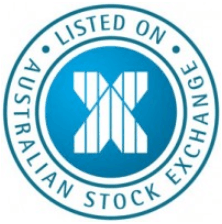
Stan Shamu for Chris Weston, Chief Market Strategist at IG Markets
It has been a swift recovery for the Nikkei after yesterday’s slump on the back of the disappointing GDP reading. There are three key issues investors are focusing on regarding Japan including the consumption tax hike, possibility of elections and the BoJ meeting. After yesterday’s Q3 GDP miss, shelving of the consumption tax hike certainly seems like a done deal. The only point of contention now is how long it will be shelved for, with speculation that it’ll be at least 18 months. The longer it is shelved for, the more positive this is likely to be on markets. However, regarding the election, this weak data presents some challenges and perhaps even reduces the possibility of snap elections. Analysts feel Abe will want a fresh slate and renewed energy to reach his economic goals. On the other hand, calling an election now could see his majority slip significantly. Regardless, the media is likely to continue to speculate around an election. We also have the BoJ meeting commencing today with no changes expected after October’s surprise easing. Pressure is likely to mount on monetary policy to do the job that fiscal policy is struggling to achieve. There is already some speculation the BoJ will announce around ¥2 to ¥3 trillion worth of easing and this will tie up nicely with a sales tax delay. This would then pave way for Abe to call snap elections. Having said that, USD/JPY has been steady all day and it’s clear traders are waiting for a catalyst, of which the next 48 hours should bring some clarity.
China property prices remain a concern
It is day two of the Hong Kong-Shanghai exchange link and activity is considerably lower than that which we saw yesterday. North bound activity has only seen around $3 billion of the daily $13 billion quota taken up and even less southbound. The Hang Seng and Shanghai Composite are both struggling with investors focusing on another round of weak property prices data. It is clear investors are struggling to find bright spots at the moment and the main central banks will have to be at the forefront of any risk rally. Locally, it has been another disappointing performance, with the market failing to hang on to early gains. Some had hoped the China Free Trade Agreement would lift some sectors today but this was short lived. The reality is we have iron ore prices at five year lows and investor confidence in the sector has dissipated. It’s the perfect environment for short sellers and strength is being taken advantage of as an opportunity to sell. From a price action perspective, the ASX 200 is now testing the 38.2% retracement of the rally from October lows to last week’s highs. This level comes in at 5386 and we could see some support around there. The AUD did not react much to the RBA monetary policy minutes as expected. However, RBA Governor Glen Stevens speaks later today at the Committee for Economic Development of Australia (CEDA) annual dinner. Perhaps we might hear some commentary on the AUD which might cause some volatility.
Euro likely to remain under pressure
Ahead of the European open, we are calling the major bourses mildly firmer with a dovish ECB keeping investors encouraged. The euro slipped and equities firmed yesterday after Mario Draghi said an expanded purchase program could include government bonds (something investors always want to hear) and added the economic outlook is increasingly sobering. While Mr Draghi maintained his usual ‘whatever it takes’ rhetoric, his emphasis that the governing council was unanimous in its support was significant, given recent rumours suggesting he is growing increasingly unpopular in his camp. The ECB also seems to be ramping up its covered-bond purchases after raising this to about €10.485 billion last week. All up, this suggests traders should continue to expect a significantly weaker euro. In recent times we have learnt not to fight central banks, as seen with the Fed and BoJ, and all roads currently lead to a depreciating euro. I continue to feel selling EUR/USD into strength is a logical step and in the near term, November lows around $1.2358 are likely to be tested. On the calendar today, we have ZEW economic sentiment readings along with some ECB commentary to keep an eye on. In the UK, we have CPI data although after the inflation report last week, today’s reading is unlikely to be a big market mover.